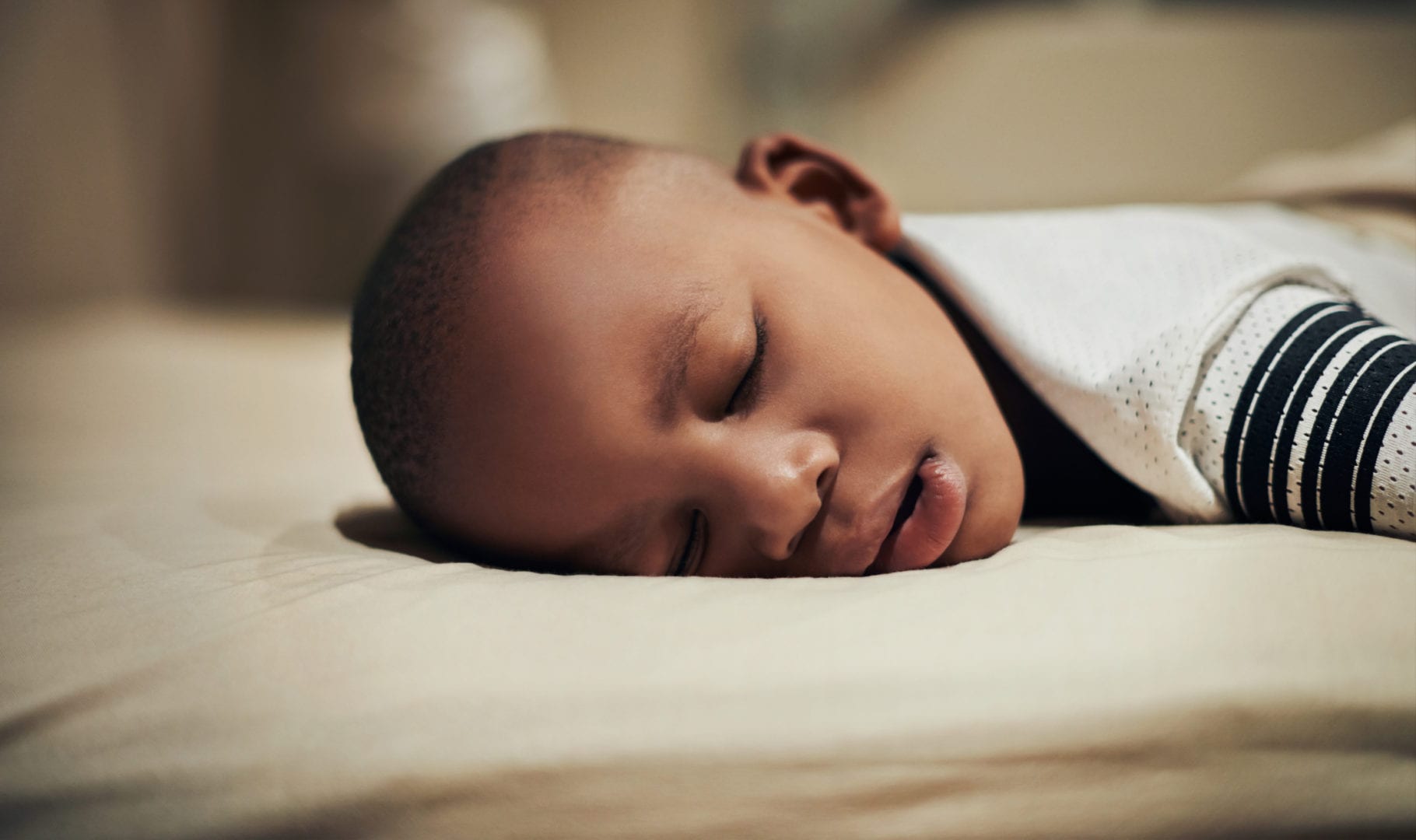Unlike childhood nightmares, which often feature monsters under the bed followed by a swift cry for snuggles, night terrors happen before dreams have had the chance occur. The result? Odd behavior that’s impervious to comfort. “Night terrors have more of an outward reaction than nightmares,” says Dr. Brandon Smith, general academic pediatrics fellow in the Department of Pediatrics at Johns Hopkins in Baltimore. “They tend to happen during the first half of the night during non-REM sleep, and usually the child isn’t aware of their surroundings and can’t be consoled.”
According to Dr. Lauren Broch, a psychologist at the Northwell Health Sleep Disorders Center, when a child is having a night terror, they’re in a “deep stage of sleep while still activated.” The behavior that accompanies night terrors can look different from child to child — some stare, some thrash around in bed — but it’s generally unsettling for parents and caregivers to witness.
From the key difference between nightmares and night terrors to potential triggers, experts offer insight on how to navigate the strange world of night terrors.
What do night terrors in children look like?
When a child is having a night terror, they neither appear to be awake nor asleep. They may be moving around, but they’re “not there,” according to Broch, who adds that, in some cases, a child may appear to be “pushing bugs” off their body.
Night terrors can look a number of ways, but two things that are generally consistent with each episode are that the child appears “out of it” and they’re inconsolable (so it’s best not to try to soothe them — more on this in a bit).
According to Broch and Dr. Sara Siddiqui, a pediatrician and clinical assistant professor in the Department of Pediatrics at NYU Langone’s Hassenfeld Children’s Hospital in New York, here’s what may happen during a child’s night terror:
-
Screaming.
-
Flailing and thrashing.
-
Not knowing what’s happening; appearing confused.
-
Sweating.
-
Elevated heart rate.
-
Appearing scared.
-
Sleepwalking.
-
Staring out to space, not reacting to anything around them.
What’s the difference between nightmares and night terrors?
The biggest difference between a nightmare and a night terror is the child’s awareness. Put another way: Nightmares are more distressing for the child, night terrors are more distressing for parents and caregivers. “With nightmares, a child is generally easy to arouse, and they realize that they’ve had a nightmare and can be consoled by a loved one,” explains Smith. “With night terrors, the child isn’t aware that it’s happening and it may be harder to ‘wake them’ or comfort them.” Children also tend to remember nightmares the following morning, whereas it’s very uncommon to have any recollection of a night terror.
Additionally, nightmares occur during a separate stage of sleep than night terrors. The former happening in the second half of the night during REM (dreaming) sleep, the latter tending to happen in the first third of the night during the deepest period of non-REM sleep, according to Siddiqui.
What’s the difference between night terrors and nocturnal seizures?
Something less common than night terrors are nocturnal seizures. “A nocturnal seizure is an epileptic seizure that happens when a person is sleeping,” explains Dr. Irina Trosman, a pediatric sleep specialist at Ann & Robert H. Lurie Children’s Hospital of Chicago. “These happen less frequently than night terrors, and often a child will do a repetitive, automatic motion over and over, almost like a robot, while having one.” These body movements are not associated with night terrors in children, and parents and caregivers should notify a child’s doctor if they occur.
How long does a night terror last?
Night terrors are generally pretty short. “They can be anywhere from a few minutes in length to a half hour,” Trosman says. And fortunately, most episodes of night terrors get less frequent with time, with most children outgrowing them completely by adolescence — many before then. “Most kids outgrow night terrors by age 5,” says Trosman. “That said, they can occasionally re-emerge when a child is sleep deprived.”
Should you wake a child having a night terror?
No! While it may be tempting to try to comfort a child who’s having a night terror, don’t. “Comforting works with nightmares,” Trosman says. “With night terrors, it’s counterproductive.” Broch adds that when a child is having a night terror, they’re in that “glitchy, in-between state” and trying to wake them may agitate them or even provoke a physical reaction.
The best thing parents and caregivers can do when a child is having a night terror is stay close by to make sure they stay safe. “If a child is having a night terror and they’re thrashing around in bed, the most important thing to do is make sure they don’t hurt themselves,” Smith says. “The episode will eventually end with the child falling right back to sleep.”
What causes night terrors in children?
Smith explains that night terrors occur when a child is going from a deep early phase of sleep into their REM sleep. “There’s an overexcitement of their nervous system that causes the ‘terror’ during the change in sleep state,” he explains. “Typically, this change in sleep states is quiet and smooth.”
When it comes to night terrors, there does appear to be a genetic component, with it occurring more frequently in children who have a family member who’s experienced them. That said, the following can be night terror triggers, according to Smith, Siddiqui and Trosman:
-
Lack of sleep or being overtired.
-
Stress.
-
Change in environment, such as a move or travel.
-
Change in family dynamics, such as divorce.
-
Illness.
-
Jet lag.
-
Breathing problems, such as sleep apnea (Note: If a breathing issue is suspected, it’s important to discuss with the child’s doctor).
“Night terrors can also occur during different periods of development and rapid brain growth during toddler years,” says Siddiqui.
How do you help a child with night terrors?
In the moment, the best thing parents and caregivers can do to help a child with a night terror is to stay close by to prevent any type of injury. On the front end, making sure children get adequate sleep may be effective in preventing them.
If the episodes happen around the same time each night, waking them up beforehand may prevent them from happening. “If sleep terrors seem to be occurring at the same time every night, then I may ask the parents or caregivers to wake the child 15-20 minutes prior to the event to try and break the cycle,” Siddiqui says. “Keeping a sleep journal is helpful to track when the episodes occur.”
Finally, try to be patient. While night terrors can seem scary, most of the time they’re harmless and resolve with time. And if your child is having trouble sleeping or you suspect a sleep disorder, here’s more reading about sleep issues.






